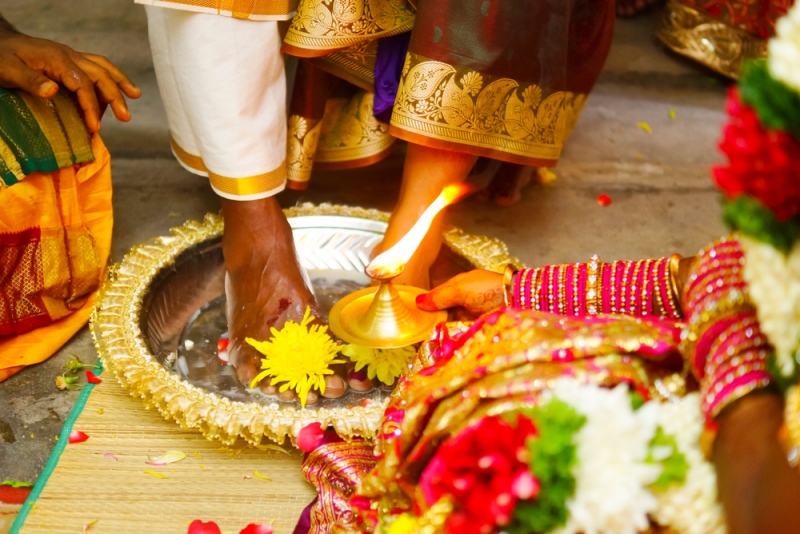Your Essential Guide to Indian Wedding Rituals for the Best Wedding Ever
Anyone who has ever attended an Indian wedding knows how special it can really be. Indian weddings are grandiose, magical and memorable affairs, and the atmosphere is always fun and unique. But it’s one thing to attend one as a guest, and another to plan your own Indian wedding. Planning one – and making sure everything turns out perfectly – is a whole different matter. But this doesn’t mean it’s impossible, however. If you want your Indian wedding to be as perfect as can be, here’s your essential guide to some important Indian wedding rituals.
Pre-wedding
Indian weddings have a number of pre-wedding rites and rituals, which last for around one week. There are two major ones: Pithi and Mehndi. Pithi is a ceremony for good luck and fortune. In general, the bride and groom have separate ceremonies in their respective homes. Pithi (a paste made from chickpea flour, rose water, and turmeric) is applied to the skin of each of them. Mehndi is a ritual held on the night prior to the wedding, and it is usually celebrated by the bride’s female relatives. Henna is applied to the bride’s hands and feet, with the designs signifying joy, spiritual awakening, and beauty.
The wedding itself
The wedding itself has certain rituals as well, with the ceremony consisting of rituals designed to unite the couple and their families. The rituals include Baraat, or the procession of the groom, Milni, or the meeting of the two families, Ganesh Puja, or the prayer offered to Lord Ganesh, Kanya Aagaman, or the bride’s arrival, Jai Mala, or the exchange of colourful garlands, the Kanyadaan and Hasta Melap or the giving away of the beautiful bride, the Vivah Havan, or the lighting of the fire (Agni), which is sacred, the Mangal Phere, or the circling of the fire, and the Saptapadi, or the ‘seven sacred steps’. The last important wedding ritual is the Aashirvaad or the blessing for the newly-married couple.
Perhaps the most popular ritual during the wedding is the bride’s arrival (Kanya Aagaman) where the bride goes into the venue (incidentally, if you’re looking for Indian wedding venues, there are a number of suitable venues in Oxfordshire such as the Mansion House and the Crowne Plaza Heythrop Hotel) escorted by her maternal aunt and uncle, which means that the maternal side of the bride has blessed the union. In other areas of India, the female friends, cousins, and sisters of the bride are her escorts.
Another popular ritual is the garland exchange, or the Jai Mala, where the bride and the groom present each other with colourful garlands of flowers, symbolising their acceptance of one another.
It’s important to get to know each ritual and its significance so you can incorporate it properly into your wedding. Congratulations and best wishes, and happy planning!















